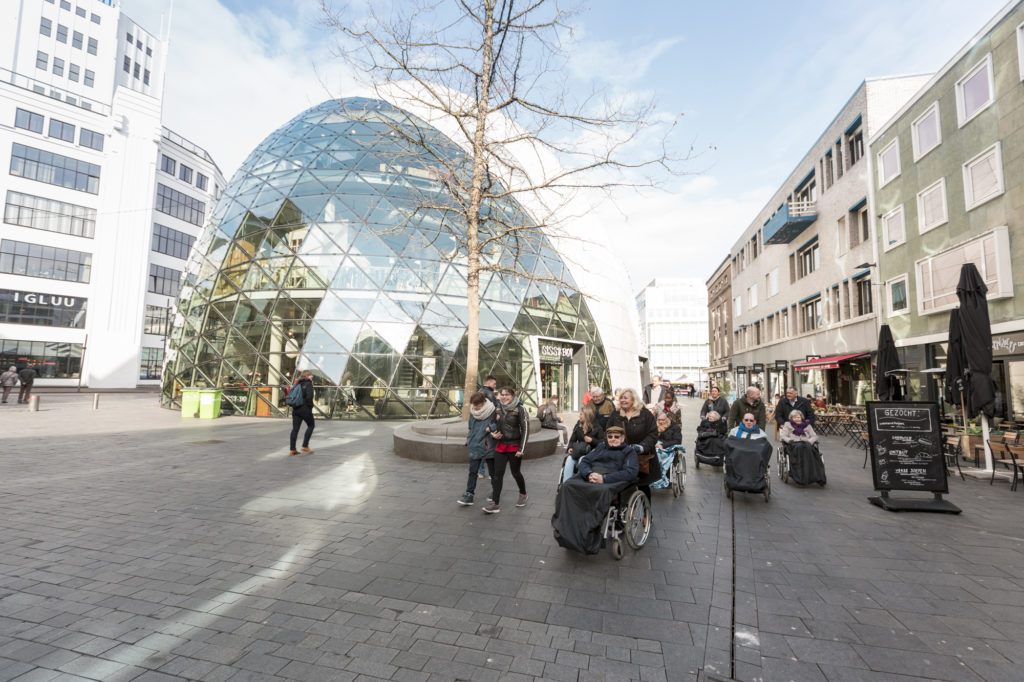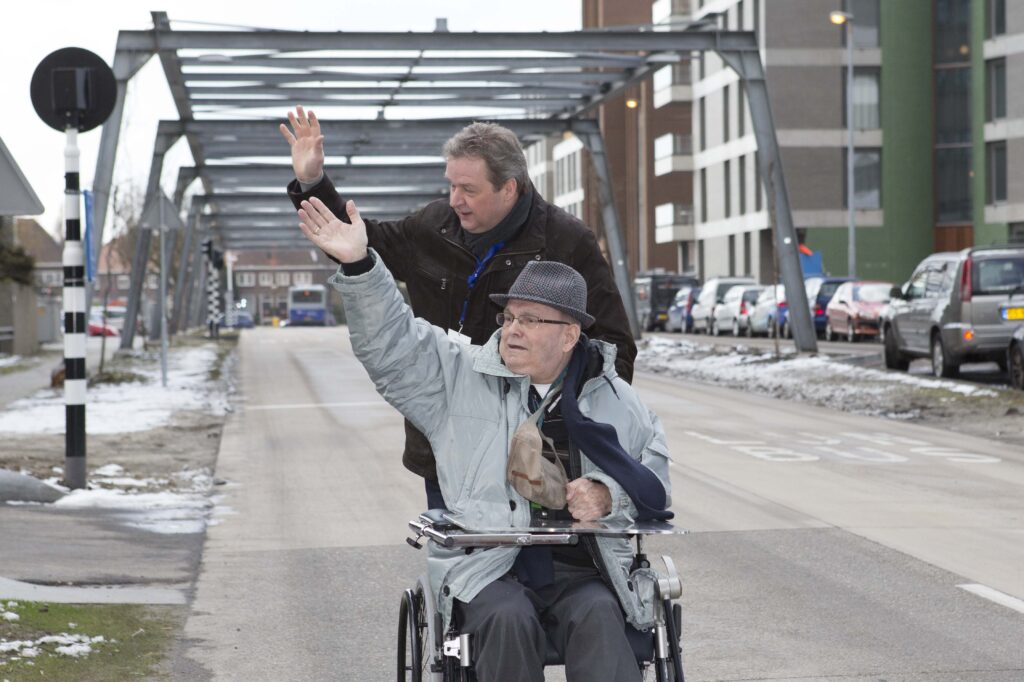Considerations when escorting residents in wheelchairs
As a (corporate) volunteer, you and your colleagues will do an activity with people in wheelchairs. How do you push someone who is in a wheelchair? How do you provide a safe and enjoyable walk? For the other person and for yourself? Here are tipsfor walking with someone in a wheelchair.
Communication:
- Always approach the resident from the front (looking at and addressing them);
- Communicate with the other person. Signal when you encounter an obstacle, such as a threshold. Say what you are going to do. Ask and consult;
- Let the other person do as much as possible for themselves and don't take everything off their hands unasked. No matter how well you mean it;
- Does he/she see you coming? Greet, talk, only then touch resident or do something with the wheelchair (e.g. drive). Seek eye contact or call attention , otherwise the resident may be startled;
- When you talk, try to get on the same level with your face, such as by going through your knees or grab a chair;
- Avoid unnecessarily using the word "we. Instead of, "we will stand for a moment," ask "will you stand up?
- People who speak softly often do hear well (ask);
- If you are with multiple supervisors, try not to talk over the heads of the residents, but involve them in the conversation;
- If you are in a store or restaurant with a resident, let the resident choose for themselves if possible;
- You may be assisting someone with faltering memory, here are tips on coping with dementia.
Along the way:
- Can you adjust the push handles? Adjust them to push height of your arms. The higher, the more comfortable you push because you will walk up straighter;
- Fold back the footrests and place the feet on them. The feet should never touch the ground while riding;
- Check that nothing can get between the spokes, such as clothing;
- Don't walk too fast, especially with people who have trouble processing many impressions;
- Choose routes with as smooth a surface as possible. Avoid gravel and dirt paths;
- Go backwards down sidewalks and steps so the resident cannot fall out of the wheelchair. Place the wheelchair right in front of a threshold or curb and press one of the supports on the back of the wheelchair with your foot. Gently raise the front wheels slightly. Push the rear wheels forward until you can get the front wheels back on the ground over the threshold and drive over the threshold;
- At curbside turn the wheelchair around and put it right in front of the curb. Step off the curb yourself, then gently lower the rear wheels off curb. And keep pulling backward until the front wheels hit the ground. Then turn the wheelchair back in the direction of travel;
- Put the wheelchair on the brake if you stay still;
- Avoid lashing the resident and/or wheelchair;
- If a resident wants to get up from the wheelchair, check that it is on the brake.


Many residents of care facilities receive few visits from family or friends. And because they are less mobile, it is physically (or mentally) difficult for them to go out on their own. Social isolation lurks. A dose of vitamin A from Attention will make you smile and improve your health. Not only is this healthy for the residents, volunteering is also good for your vitality. Your contribution (vitamin A of attention) is of great value. Moreover, it really is a lot of fun. Have fun together!
